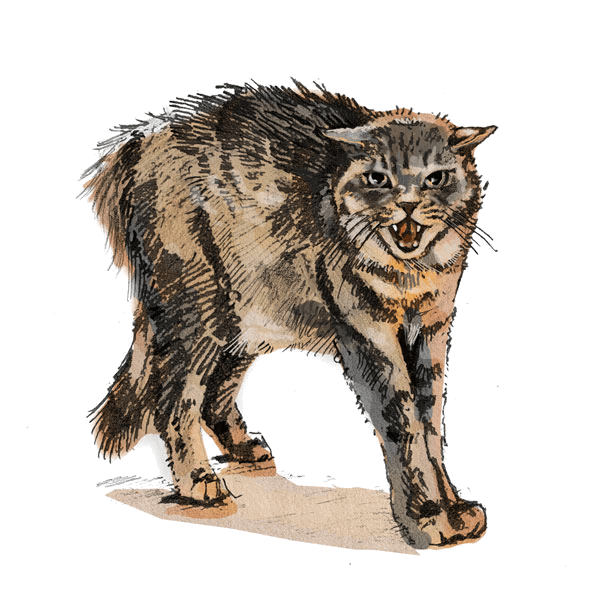STRAY or FERAL?
STRAY | FERAL |
SOCIALIZATION TO HUMANS | |
May approach people, houses, porches, or cars | Will not approach people, hides, avoids people |
SOCIALIZATION TO OTHER CATS | |
May live in but not seem part of a colony | May belong to a colony |
BODY LANGUAGE | |
Might walk and move like a house cat, such as walking with tail up—a sign of friendliness. | May crawl, crouch, stay low to the ground, and protect body with tail. |
May look at you, blink, or make eye contact | Unlikely to make eye contact |
VOCALIZATION | |
May be vocal, meow, or “answer” your voice | Won’t meow, beg, or purr |
SCHEDULE | |
Will be visible primarily during the daytime | More likely nocturnal; less likely out in daytime |
PHYSICAL APPEARANCE | |
May be dirty or disheveled | May have a clean, well-kept coat. A male with a big head thick neck, muscular body, and/or scars from fighting - more likely to be feral, since these are traits of intact males. May also have a spiky coat from high testosterone level and less grooming; may also have “stud tail”—hair loss, greasiness, or bumps at the base of tail due to hormones. |
Will likely not have an ear tip | Likely has an ear tip, if neutered by TNR program |
PREGNANCY, NURSING, KITTENS | |
A female who is pregnant or lactating is more likely to be feral, since only 2% of feral cats are neutered in the U.S. | |
A cat’s level of socialization and behavior is not always black and white, particularly for feral cats who recognize their caregiver. They may show signs of familiarity, such as a tail up or hanging out on a caregiver’s porch, but these behaviors are usually limited to the cat’s interaction with the caregiver and only develop after building a relationship over time. Always remember: this does not mean that the cat is a good candidate for living indoors.
How do I tell feral and stray cats apart once I have trapped them?
When in a frightening or stressful environment—such as a trap or a shelter—a friendly stray cat may act like a feral cat, avoiding people and possibly even showing aggression to avoid being touched.
Here are some ways that will help distinguish a feral cat from a scared stray cat when they are frightened, confined, or in a new place.
STRAY | FERAL |
TOUCH BARRIER | |
May be possible to touch the cat eventually or cat may tolerate a small amount of touching | Can not be touched, even by a caregiver |
CAGE BEHAVIOR | |
May come to the front of the cage. | Will likely stay in the back of the cage and retreat as far back as possible. |
May eventually rub against the cage in a friendly way | If jolted or frightened, may shake, rattle, or climb the cage, and could become injured banging into the cage |
LEVEL OF RELAXATION | |
May relax over time | Will remain tense and unsocial |
RESPONSIVENESS | |
May investigate toys or food placed near cage | Likely ignores all people and toys, even food |
May respond to household sounds like cat food cans or bags being opened | Shows no familiarity or interest in household sounds |
FEAR AND ANXIETY | |
May hiss or growl to show anxiety
| Aggressive and lashes out if threatened or cornered (signs of aggression include ears back and eyes dilated)
|
adapted from Alley Cat Allies

